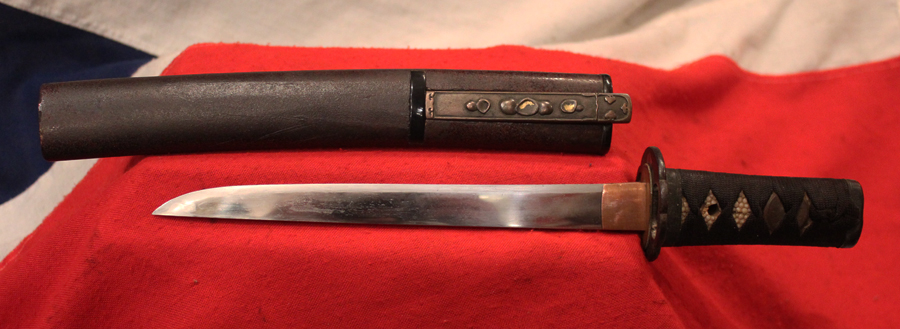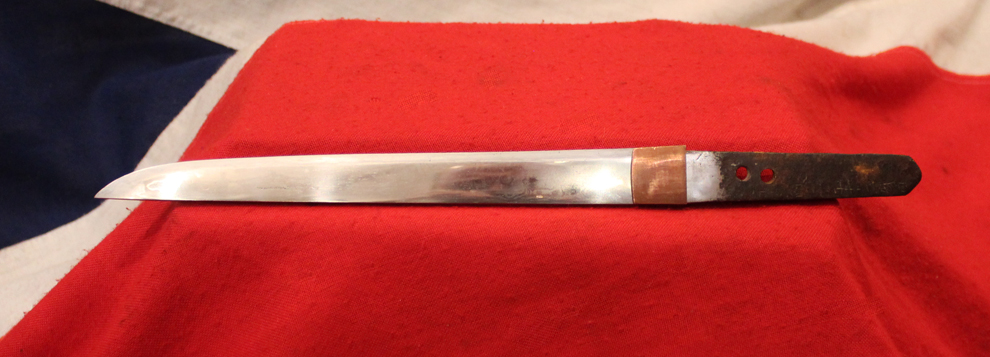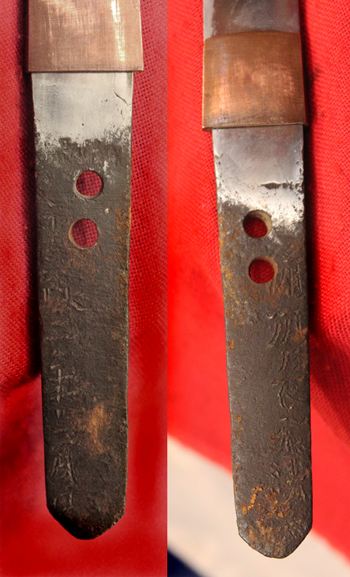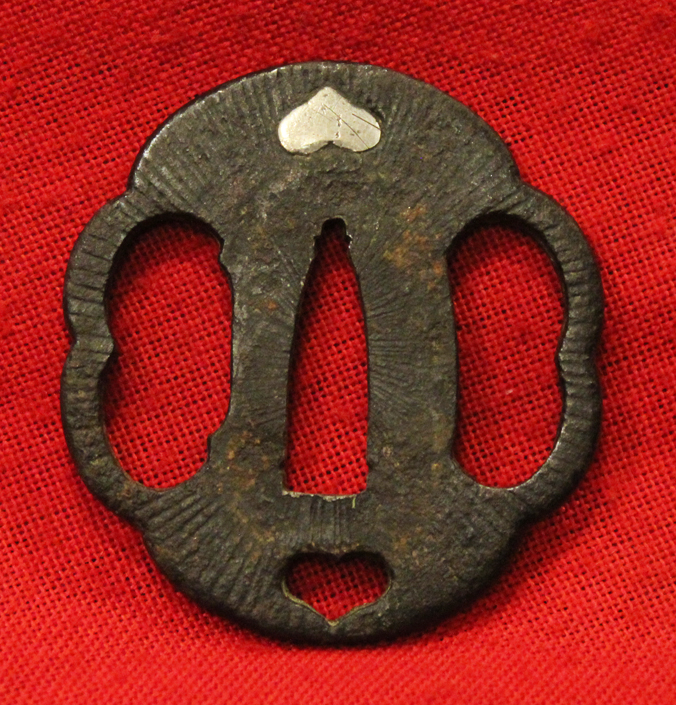A Very Fine Early Japanese Armour Piercing Tanto Signed and Dated 1558. Just One Example of Our Amazing Selection of Hundreds of Original Samurai Swords To Be Viewed In Our Gallery. Said By Many To Be One of The Best In The World
Including, as quoted to us by Victor Harris, formerly curator of Japanese swords at the British Museum.
It was Victor who also personally confirmed for us the authenticity of our ‘Grass Cutter’ katana, as an historismus Japanese National Treasure sword, some few years ago.
Signed Bizen Osafune Kiyomitsu. With gilt and patinated handled kozuka. O-sukashi koto tsuba inlaid with silver boars eyes. A delightful tanto in all original fittings and an Edo brown stone lacquer finish. Nice and beautiful blade in good polish showing a fine sugaha hamon. A very thick bladed tanto specifically designed to penetrate using a powerful thrust, either samurai armour or even a helmet. Wide narrow straight sided blade, with a narrow suguha hamon typical of the Koto era. Mounted in a plain wooden shirasaya mount that bears some kanji text on both sides of the tsuka. We have not had this translated yet. The bottom of the saya bears a carved image of a stern face. The yoroi-doshi "armour piercer" or "mail piercer" were one of the traditionally made Japanese swords (nihonto) that were worn by the samurai class as a weapon in feudal Japan. The yoroi-doshi is an extra thick tanto, a long knife, which appeared in the Sengoku period (late Muromachi). The yoroi-doshi was made for piercing armour and for stabbing while grappling in close quarters. The weapon ranged in size from 20 cm to 24 cm, but some examples could be under 15 cm, with a "tapering mihaba, iori-mune, thick kasane at the bottom, and thin kasane at the top and occasionally moroha-zukuri construction". The motogasane (blade thickness) at the hamachi (the notch at the beginning of the cutting edge) can be up to a half-inch thick, which is characteristic of the yoroi-doshi. The extra thickness at the spine of the blade distinguishes the yoroi-doshi from a standard tanto blade.
Yoroi-doshi were worn inside the belt on the back or on the right side with the hilt toward the front and the edge upward. Due to being worn on the right, the blade would have been drawn using the left hand, giving rise to the alternate name of metezashi or "horse-hand (i.e. rein-hand, i.e. left-hand) blade".
Every single item from The Lanes Armoury is accompanied by our unique Certificate of Authenticity. Part of our continued dedication to maintain the standards forged by us over the past 100 years of trading.
Did you know? the most valuable sword in the world today is a samurai sword, it belongs to an investment fund and has appeared illustrated in the Forbes 400 magazine. It is valued by them at $100 million, it is a tachi from the late Koto period [16th century] and unsigned. Its blade is grey and now has no original defining polish remaining
Code: 21094
2750.00 GBP










